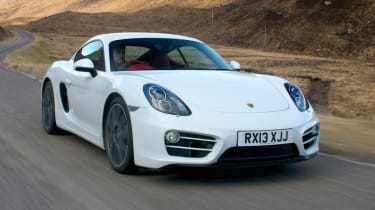Porsche Cayman (2012-2016) review - MPG and running costs
Everything you could ever want from a sports car
MPG and running costs
As well as the weight loss, fuel economy benefits from improved operating efficicency, including better thermal management and a stop/start system, which is linked to either the standard six-speed manual (with heel-and-toe auto rev-match technology) or optional seven-speed PDK paddleshift gearbox.
The latter boasts the best efficiency, with a claimed 36.7mpg and 180g/km of CO2 emissions for the PDK-equipped 2.7. A similarly equipped Cayman S enjoys a CO2 rating of just 188g/km. Not bad at all for a 174mph sports car.
Much of the PDK’s advantage is down to its very long seventh gear and further reflected by the extra urban fuel figure: 45.6mpg compared to the manual car's 40.9. In fact, a PDK-equipped Cayman S is more economical than a manual Cayman 2.7. For some context, BMW’s M135i trails the Cayman S by 19bhp yet returns worse fuel economy and emissions.
Taking insurance, residual values, servicing and VED taxation into consideration, the Cayman still looks the pick of the sportscar bunch when it comes to overall running costs.



